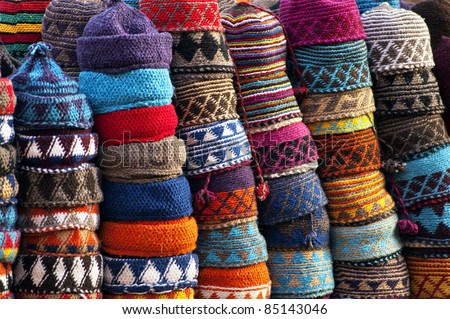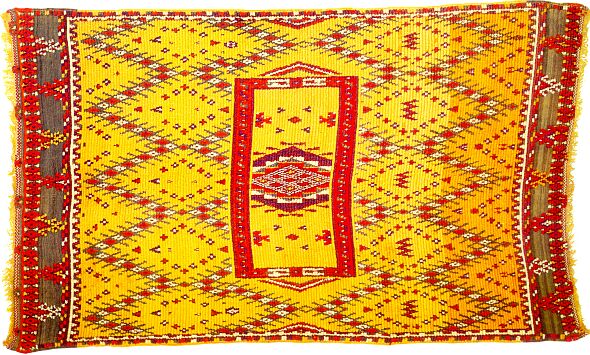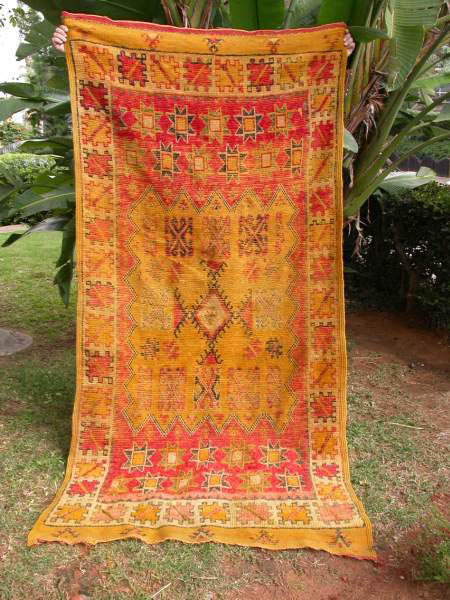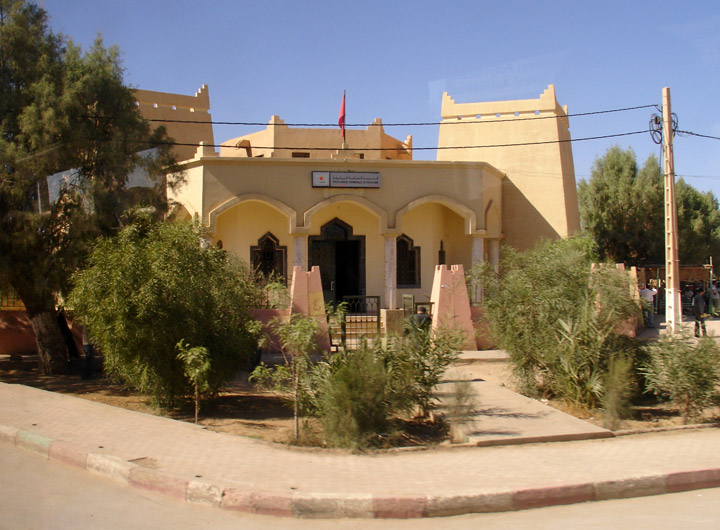
Moroccan Carpet Styles
Traditional Berber carpets contain distinctive patterns and colors and are woven from sheep wool or camel hair (you can also find them made from nylon and olefin material). The materials are hand-washed and naturally dyed from saffron yellow, to wild mint green, and from pomegranate and henna. These carpets are known for their strong geometric designs, and have been dated them as far back as the Merinid era. Carpets in the Middle Atlas generally have a traditional diamond grid.
Moroccan Carpet Climates
The Berber tribes developed a variety of weaves to be adaptable to different climates. The rugs in the mountains have larger loops, are more loosely knotted to provide protection against the cold. In warmer climates the rugs are made with a finer weave. The carpets in the Middle Atlas were used as sleeping mats, and in regions with mild climates knots tend to be 2cm high.
Moroccan Carpet History
Berber weaving is highly dependent on the female culture, and is passed down traditionally within the home. The young apprentice is expected to learn the the different looping techniques, patterns, colour ranges and motifs. Historically women wove carpets for their families, and men traditionally produced carpets that were more specialized as professional master weavers. These inspiring designs have been motivation for more modern carpet fabrication.
Historically carpets where a preferred gift for people in elite social classes and where used to adorn palaces and other sacred places. The more urban carpets have also been used at prayer mats and rugs in the hammam. Travelers who are interested in Berber carpet weaving should check out the Weavers Cooperative, and the Berber Carpet Demonstration, a famous exhibition. Some ancient Haouz rugs are also preserved in museums such as the Dar Batha Museum.
These intricate rugs can be purchased from the tribes themselves but also in the winding souks of Fes, Marrakech and Rabat or right here in our moroccan carpet shop.
Traditional Berber Carpets Haouz
Carpets originating in the hills and plains of the Haouz region do not tend to follow traditional designs or rules. In this region, the weavers stress the freedoms of the individual throughout the composition. The carpets have a distinctive style and are often captivating works of art.
Moroccan Art Form
The bold colors, in depth patterns and weaving techniques of different regions have their own distinct style. Each tribe has a signature pattern and commonly unfold a story, revealing acts of ceremony, or designs that often relate to fertility and protection. Like any other type of abstract art, interpretations can be better guided with additional knowledge of the culture, songs and legends.
For a selection of these fine hand made carpets please visit our Moroccan carpet store.




















